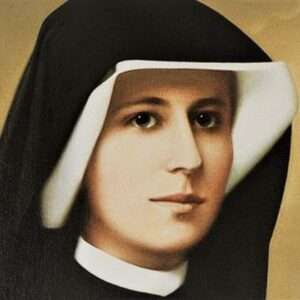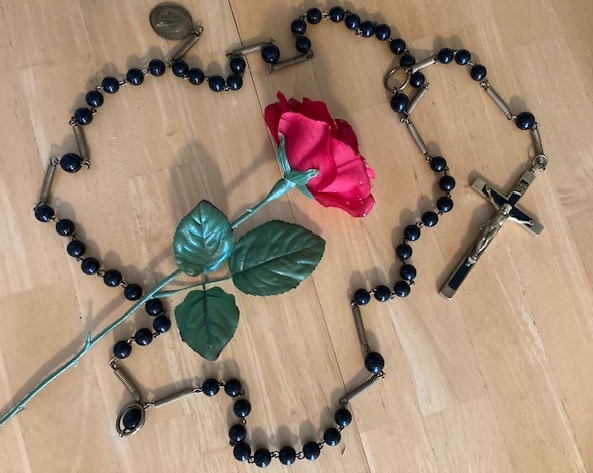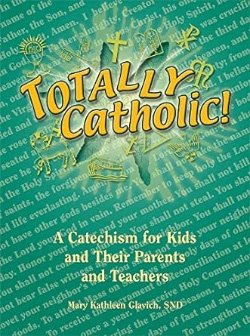
Divine Mercy is a comparatively new devotion that Jesus himself introduced to the world through a young Sister of Mercy. The title itself is beautiful. Divine because it centers on the mercy of God. But we use the word “divine” to mean spectacular, as in “that dress is divine.” And the mercy of God truly is wonderful.
When the original sin of Adam and Eve lost eternal happiness for all humankind, God had compassion on us. The devils did not have a second chance to live with him, but we do. God sent his Son to re-establish our relationship with him. Because of the life, death, and resurrection of Jesus, we can hope to live with God forever.
We, though, can waste this opportunity by our personal sins. Again, our loving God extends mercy and forgives us when we are sorry and intend to improve.
The Mercy of Jesus
The gospels reveal that Jesus was always forgiving people: the woman caught in adultery, the cheating tax collector Zacchaeus, the woman whose tears fell on his feet, the paralytic lowered from the ceiling, and his unfaithful apostles who abandoned him when he needed them most.
Jesus also taught that the Father loves to forgive, like the father who welcomed the prodigal son, the shepherd who searches for the lost sheep, and the woman who combs her house for the lost coin.
Divine Mercy Devotion

In 1931 Jesus appeared to Saint Faustina and asked her to promote devotion to divine mercy. He instructed her to have a picture painted that depicted him as he appeared: wearing a white robe and with two beams of light coming from his sacred heart, one red and one white. The colors stand for the blood and water that streamed from his pierced side. The words, “Jesus, I trust in you” were to be written at the bottom of the image.
Jesus also asked that the feast of Divine Mercy be celebrated on the Sunday after Easter. Saint Pope John Paul II instituted this in 2000.
Faustina heard Jesus giving her the words of the Chaplet of Divine Mercy, which can be prayed on rosary beads. Jesus told her he wanted everyone to pray it. The devotion had three purposes: to obtain mercy, to trust in Christ’s mercy, and to show mercy to others.
There is also a Litany of Divine Mercy written by Saint Faustina.
Praying the Chaplet of Divine Mercy
On the Our Father beads, pray “Eternal Father, I offer You the Body and Blood, Soul and Divinity of Your Dearly Beloved Son, Our Lord, Jesus Christ, in atonement for our sins and those of the whole world.”
On the Hail Mary beads this is the prayer: “For the sake of His sorrowful Passion, have mercy on us and on the whole world.”
Complete directions can be found on the Internet or in booklets.
Here is a recording of the chaplet that you can pray along with:
Saint Faustina
The Early Years
Saint Teresa of Avila said, “We always find that those who walked closest to Christ were those who had to bear the greatest trials.” This was certainly true for Saint Faustina.
She was born Helena Kowalska in Poland to a poor, religious family, one of ten children. After three years of school, she wanted to enter the convent, but her parent would not permit it. So she went to work as a housekeeper.
At a dance, She had a vision of the suffering Christ who asked, “How long will you keep putting me off?” He told her to go to Warsaw. So she “eloped.” Without her parents’ permission, she took a train with only the clothes on her back.
Several convents rejected her. Then the Sisters of Our Lady of Mercy agreed she could enter them, but only after she earned money. After a year when she was 20 years old, she joined the convent in 1926 and was given the name Maria Faustina of the Blessed Sacrament. After making vows in 1928, she served in different convents as cook.
The Visions
In 1930, Saint Faustina became ill and sent to rest. Back in the convent, on the night of February 22, 1931, Jesus appeared to her and told her to paint the image of him. None of the other sisters were willing to do this for her. Three years later a man painted it. When Saint Faustina first saw the painting, she cried because it did not capture the beauty of the Jesus she saw. That same night Jesus told her to inaugurate the Feast of Divine Mercy.

The Apostle of Divine Mercy
In 1933, Saint Faustina did gardening at a convent. She confided to a priest that she had visions, but he didn’t believe her. Then Father Michael Sopocko was appointed confessor to the Sisters. After she told him about speaking with Jesus and his plan, he had her undergo a complete psychiatric evaluation, which she passed.
In 1935, Saint Faustina wrote in her diary that the Chaplet of Divine Mercy was dictated to her by Jesus. That same year she wrote rules for a new contemplate religious congregation devoted to the Divine Mercy. A month later she visited a house that she had seen in a vision as her congregations’ first convent. Because she had made vows to one congregation, they couldn’t begin another.
In 1936, Saint Faustina’s tuberculosis worsened, and she was moved to a sanatorium. The next year Jesus instructed her to write a Novena of Divine Mercy. She also wrote the Litany of Divine Mercy. She returned to the convent.
In 1938 her illness progressed and she was sent to another sanatorium. A few months later she was taken back to the convent, where she died at age 33. In Krakow. She is buried in the cities Basilica of Divine Mercy.
Another Setback
Fr. Sopocko told her to keep a diary and record her visions. This diary is published as he book “Diary: Divine Mercy in My Soul.
In 1959, the Vatican forbade Saint Faustina’s Divine Mercy devotion. The was based on a faulty translation of her diary. After two decades the decision was reversed.
Triumph
Fr. Sopocko helped form the Congregation of the Sisters of Mery based on Saint Faustina’s ideas. Popes supported devotion to the Divine Mercy and Sister Faustina was canonized in 2000 after two miracles resulted from her intercession.
Here is a hymn to the Sacred Heart:
• How familiar are you with the Divine Mercy devotion?









2 Responses
I never really understood this devotion, thank you for clarifying it.
I learned a lot about it myself to write this blog. Now I’m reading St. Fautina’s diary.